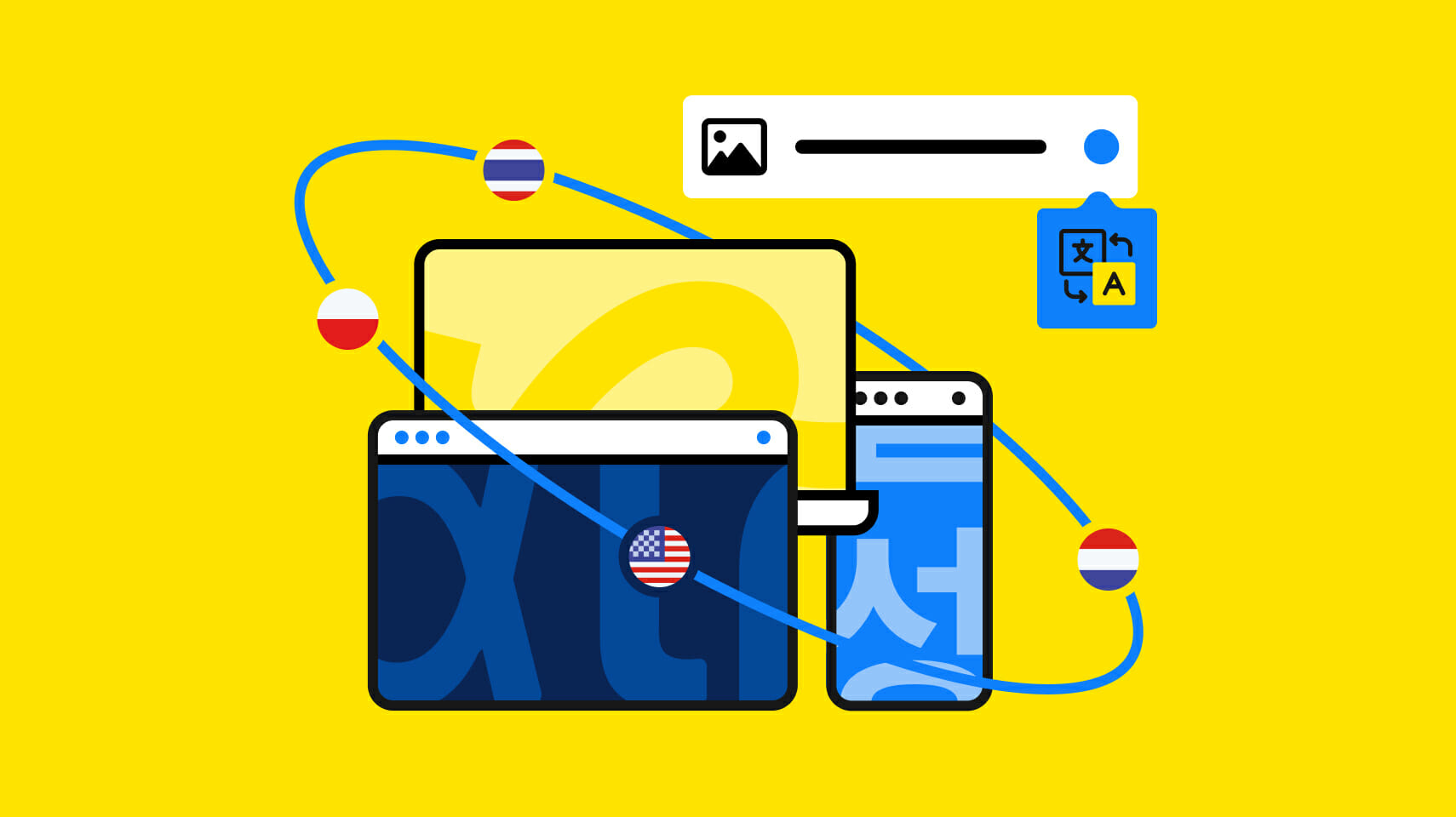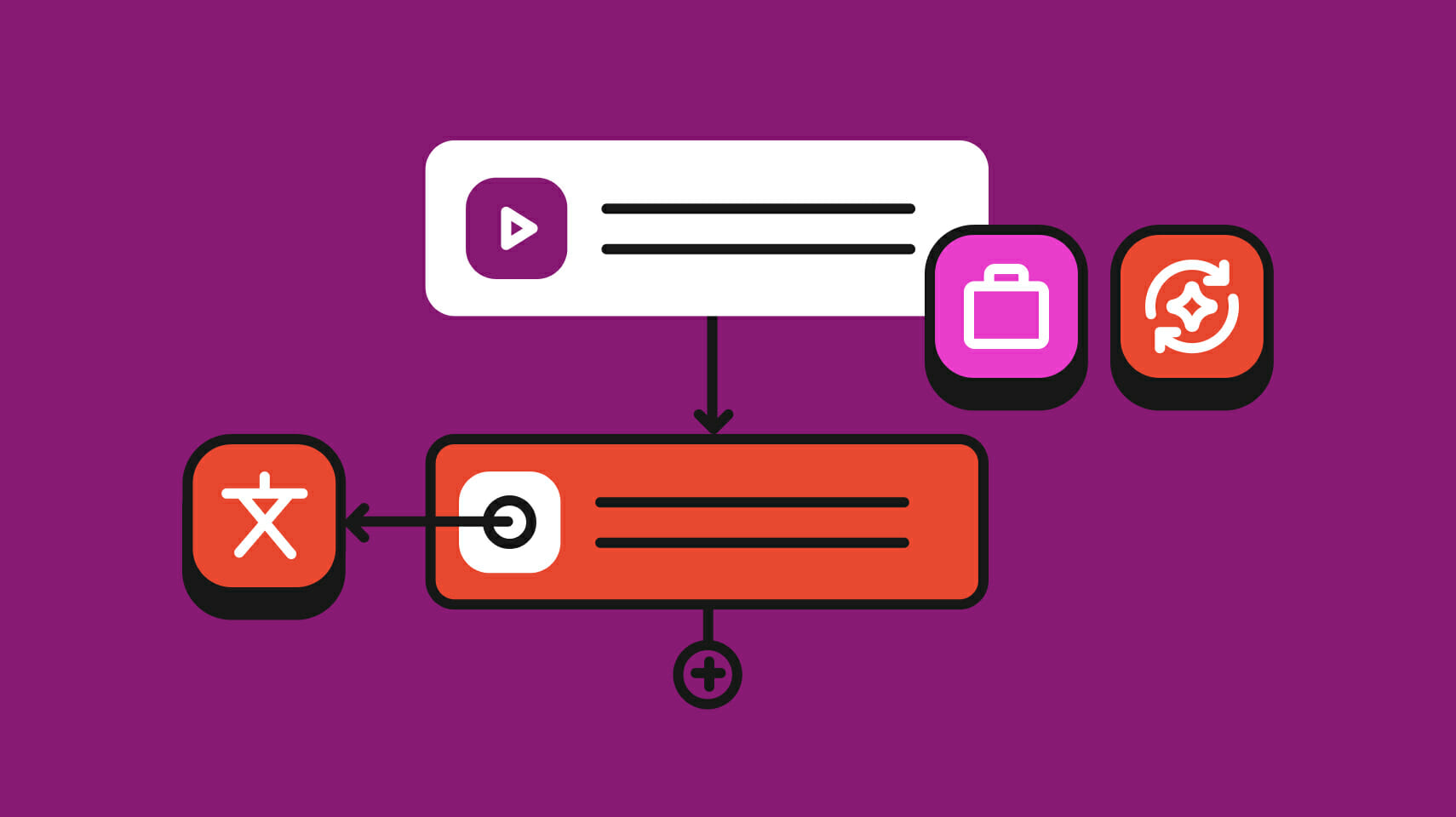Translation management
CAT Tools: Unlocking the Potential of Computer-Assisted Translation for Global Growth
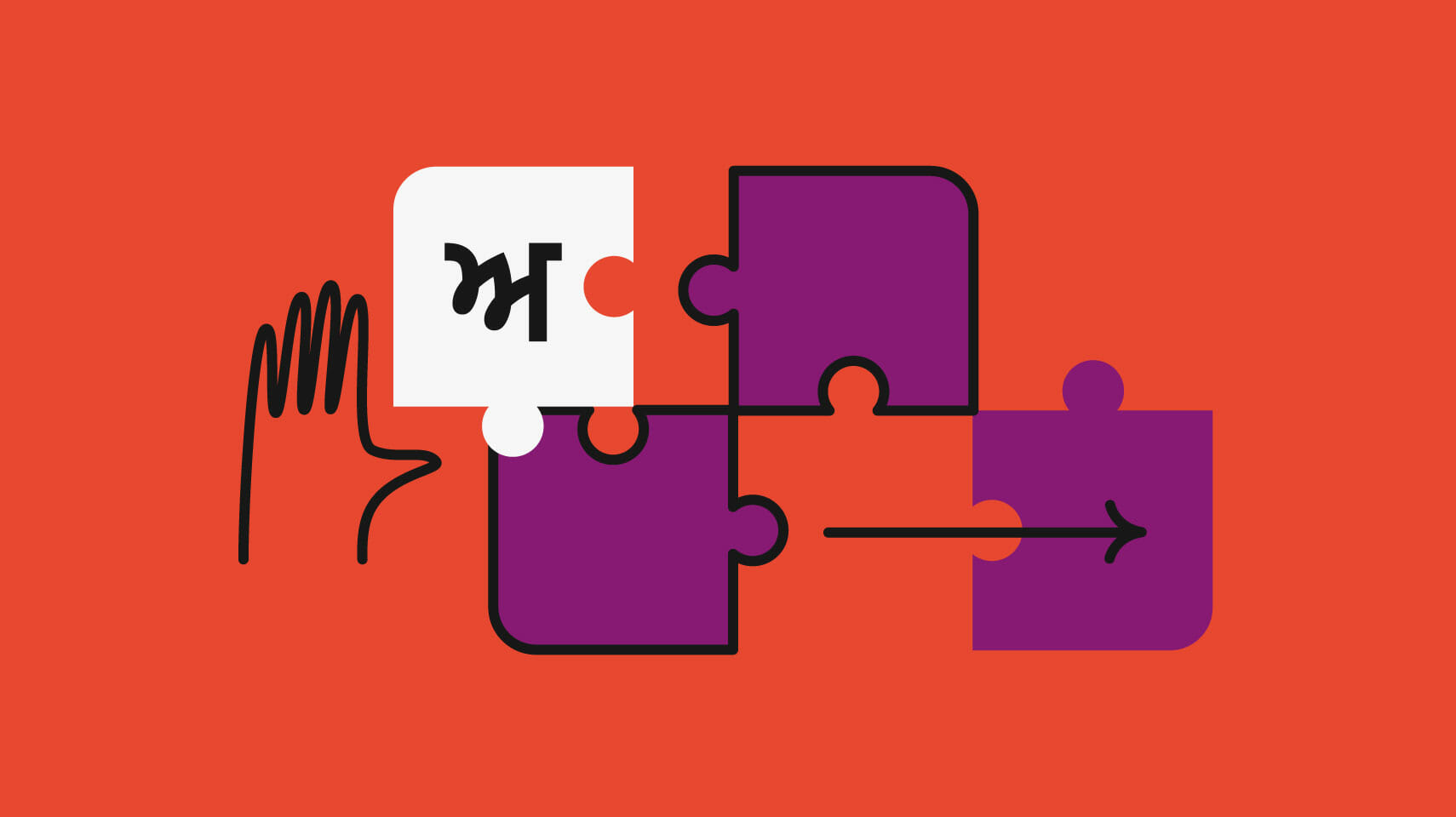
CAT tools (computer-aided translation tools) have been around in one form or another since the 1950s and have had a substantial impact on how people do translation for both personal and business use:
- They started as standalone software that could only be used on a single computer.
- Later on, they found use as client-server tools on company networks.
- Today’s CAT tools are cloud-based and can be accessed from anywhere, anytime, via a web browser.
This guide will walk you through the different types of CAT tools, the benefits they offer for growing businesses, and the key factors to consider when choosing a CAT tool for your business needs.
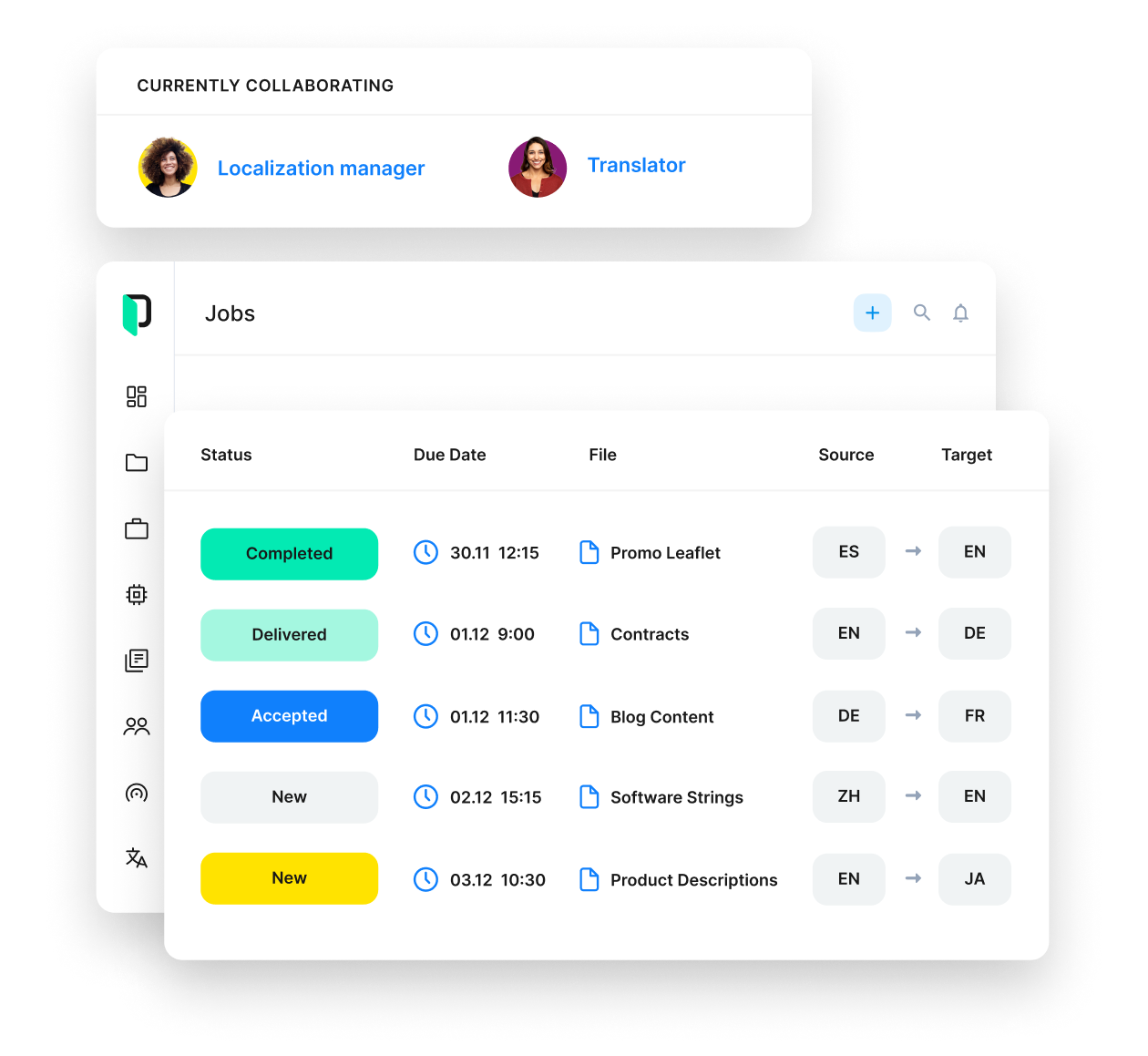
Phrase TMS
The enterprise-ready translation management system
Work with the leading TMS to automate translation workflows with cost control and quality checks.
What are CAT tools?
CAT tools are software programs that assist human translators in transferring the meaning of text between languages more quickly and efficiently. More specifically, CAT tools provide translators with an interface for submitting, editing, managing, and storing multilingual content in one place.
Growing businesses use CAT software as part of their global expansion strategy to speed up the time to market by automating manual or repetitive translation work when creating content for audiences in different target markets.
Machine translation vs computer-assisted translation
Machine translation (MT) tools are increasingly becoming useful in creating multilingual content at scale. However, they have a different objective than CAT tools: CAT software lets the human translator lead the way, while MT tools convert text from one language to another automatically.
With the advancement of MT, the decision between using machine or CAT translation is becoming less relevant. Many organizations rely on machine translation to boost translation productivity and reduce costs—typically using it as a starting point for post-editing by human translators.
By combining the speed of MT engines and the accuracy and consistency of CAT tools in cloud-based translation management systems (TMS), growing businesses can streamline the translation process to deliver high-quality multilingual content more quickly and efficiently than ever before.
What’s the difference between TMS and CAT tools?
A translation management system is a comprehensive software platform that combines CAT tools and machine translation capabilities with project management and business intelligence features. Modern TMS systems are based in the cloud and serve as the central hub for all processes aiming to adapt a product, service, or content to the culture and language of a target market—for which the umbrella term is localization.
On-demand webinar
The benefits of using a translation management system
Learn how a translation management system can help you open the door to global business by automating, managing, and translating all your content into the languages your audiences speak.
How does a CAT tool work?
CAT tools are designed to help linguists do their job more quickly and efficiently—and with the best possible quality. They work by breaking the source text down into smaller segments and storing all the source and translated segments in a database. They also come with a range of capabilities for editing and linguistic quality assurance.
Working with a computer-assisted translation tool usually involves the following steps:
- The translator inputs text into a CAT program in the source language.
- The CAT tool extracts the content for translation (source content with images or other non-text elements won’t appear as translatables in the user interface).
- The software splits the text into translation units—phrases, sentences, or paragraphs—also known as segments.
- The CAT tool displays the source text field and the translation field side by side—one segment after another.
- The translator types translations into the still-empty target segments until the translation job is complete.
- Once a translation segment has been completed, the CAT tool saves the source text and its translation together as a pair in a database called translation memory.
- The translator can return to this pair at any time to make changes, and the translation memory will update accordingly.
- The CAT tool will recognize identical or similar source-text segments (matches) and auto-fill the corresponding translations in the target column, drawing from the translation memory.
- The more content you translate, the more translation matches the CAT tool will be able to reuse in the long run—saving time and resources.
- By maintaining consistency with previous translations, the CAT tool significantly improves the quality of translations.
Common computer-assisted translation tools
CAT tools are similar to text editor programs with added features for translation. There are many CAT products on the market, each with its own unique set of functions. Nonetheless, modern CAT tools usually have some standard functionalities in common.
Translation memory
Translation memory is a record of previously created translations, aligned with source texts. You can use the translation memory function to split large multilingual documents into translation segments (phrases, sentences, or paragraphs) stored in a database.
As soon as the translation memory finds identical translation segments (full matches) or similar translation segments (fuzzy matches) in a new translation project, it will let you reuse your previous translations with or without making changes.
Translation memory saves you time and increases translation consistency by letting you save all previously approved translations and reuse them when translating similar content.
Term base
Term bases, also known as translation glossaries, are databases providing definitions or specific instructions for the use of translated terminology. You can think of it as a dictionary you use alongside the translation memory to look up terms that are relevant to the organization that you translate for.
Term bases help you to maintain translation accuracy across multiple projects by enabling consistent usage of common or specialized terminology relevant to your business.
Style guide
Translation style guides are sets of guidelines that serve as the rulebook for accurately translating your content into each target language—while preserving its original meaning and intent. A translation style guide can help you ensure that your brand’s unique attributes are conveyed consistently across all languages, cultures, and markets.
A translation style guide helps you maintain brand consistency across languages by spelling out guidelines to ensure accurate translation of content while keeping its original meaning.
Quality assurance features
Similar to the spelling and grammar check tools in text editing software, translation quality assurance (QA) capabilities, such as spellcheck, prevent errors from creeping into your translation projects. QA tools can also identify missing text or tags, deviations from approved terminologies, or numeric mismatches.
You can start the QA process before sending a project for translation, continue it during translation and editing, and perform final checks even after completing the final translation version.
With linguistic quality assurance, you can be confident that your translated content is error-free and of the highest possible quality every time.
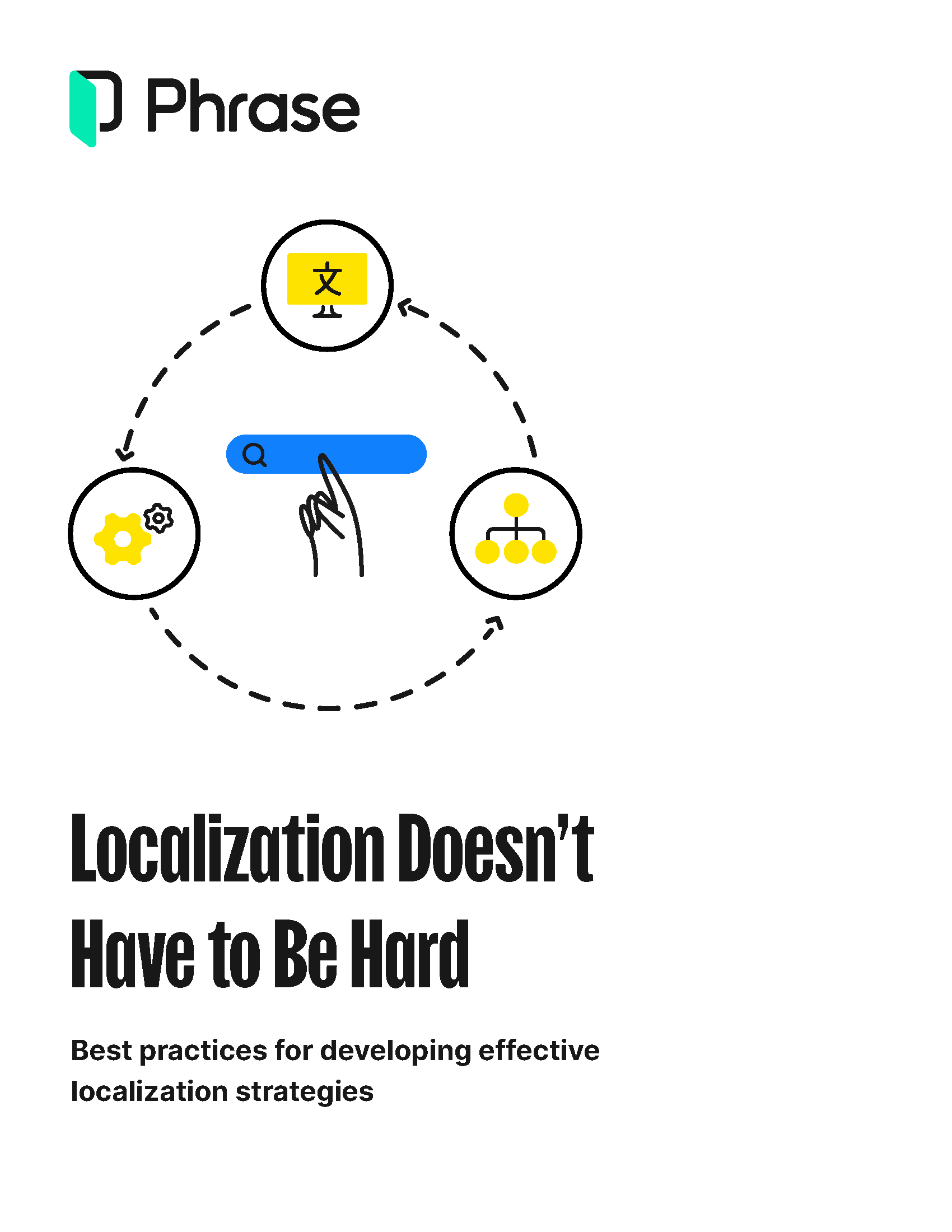
Free download
Best practices for developing effective localization strategies
Explore how to tackle localization management efficiently and engage customers across the globe in their native languages and local experiences.
The benefits of CAT tools
CAT tools can handle everything from editing text to performing quality assurance—using indexing tools, applying formal rules or style guides, correcting formatting, and standardizing terminology. With the aid of CAT software, your translation projects can improve in several ways.
CAT tools increase productivity
With a CAT tool, you no longer have to copy and paste your translations into a template. Rather than taking precious time out of your day to type, edit, and format content, you can focus only on translating the units that need translation. Your CAT tool will handle the rest and will even generate a clean copy of your original file in the source language once you are done.
CAT tools foster consistency
Thanks to translation memories and term bases within CAT tools, you can translate multiple texts with the same consistent results every time. Your CAT tool will also get smarter the more you use it, as its translation memories—or database of previously used translation units—will keep on expanding, i.e., there will be fewer words that you will have to translate individually.
CAT tools are flexible
CAT tools are easily adaptable to a variety of professional needs and workflows:
- Most of them are compatible with exchange files from other CAT tools.
- They include integrations and built-in modules that allow you to customize your workflow, so you can tailor the solution to most projects.
- You can configure customized access rights so that certain users have write permissions while others have read-only access.
- CAT tools are usually accessible across devices—on the web, desktop, and mobile—so you can use them on your preferred device, in the office, in your cloud, and on the move.
CAT tools increase translation quality
With a CAT tool, you will be able to deliver high-quality translations consistently and effortlessly. If you frequently have to produce texts using technical, financial, or industry-specific jargon, then you know just how important tone and terminology are. By referencing internal or external language databases integrated into a CAT tool, you can pick up these nuances more easily and translate texts more quickly.
CAT tools save you time and money
Thanks to their matching technology, CAT tools let you work more quickly and efficiently every single time. Your translators and other team members no longer have to go through the trouble of retyping the same translation several times in similar texts.
Why are language translation tools important for global business?
Global expansion is as much about having a product or service that resonates with international audiences as it is about approaching the process strategically. In other words, every move must aim to maximize growth while minimizing risk.
Through automation, customization, and quality assurance, CAT tools can relieve the burden of translation management when expanding into new markets. Their value lies in speeding up the time to market, reducing opportunity costs, increasing profitability, enhancing scalability, and boosting brand recognition.
| Business goals for global expansion | How CAT language tools can help |
| Time to market: The time spent ramping up and entering new markets should not take too long. | CAT tools make the translation process faster by letting you reuse translations from past projects, directly impacting the time to market. |
| Low cost of opportunity: The potential foregone profit of not entering the global market or of doing it poorly should be minimal to avoid sales loss. | CAT tools reduce the effort and cost of translation, allowing you to enter global markets faster with high-quality results. |
| Profitability: Your global operations should generate more revenue than they cost to run over time. | Revenue is directly related to time and reputation. CAT tools can improve a company’s ability to manage translations more quickly, while maintaining quality, resulting in increased revenue. |
| Scalability: You should be able to scale your global operations to additional and larger markets without too much difficulty or expense. | By ensuring quality while speeding up project delivery, CAT tools help you add new markets or product lines more quickly and efficiently, without using too many additional resources. |
| Brand recognition: Your brand should be recognizable, appreciated, and trusted across cultures and target markets. | Combining translation memories, term bases, and style guides ensures consistent, high-quality translations. This builds trust in your brand and reputation among customers worldwide. |
How to choose the best CAT tool for your needs
The CAT software market keeps growing. To survive the excess choice and find a CAT tool that best suits your business needs, it’s important to be aware of what matters most to your organization:
- Decide on your budget: CAT tools come in different price ranges. Your investment might seem high in the beginning, but it will pay off in the time you save and the efficiency you get.
- Define your goals and needs: Work out who will use the tool and ask what specific features would benefit them. For example, what file formats do you need the tool to support?
- Factor in the learning curve: An intuitive interface saves users time. Choose a flexible and user-friendly CAT editor with a simple dashboard, clear navigation, knowledge base, and support.
- Look for integrations: The best CAT tool can integrate with your preferred software tools to seamlessly communicate and exchange data within your digital ecosystem.
- Test before committing: Take advantage of free trials to test the software before committing and get an understanding of how the tool can meet your requirements.
- Choose a future-proof CAT tool: Finally, choose a CAT tool provider that can scale with your growing needs and is open to collaborating with customers to provide updates that may be useful to you.
Say hello to a new CAT tool experience
You can get all of the above—and more—from Phrase TMS, the enterprise-ready translation management system within the Phrase Localization Suite.
Growing companies around the world rely on Phase TMS to reach global markets more quickly by efficiently translating their websites, product documentation, sales presentations, marketing collateral, etc.
With Phrase TMS, you get:
- A fully-featured CAT editor with advanced visual editor with real-time previews of translated content
- Translation memory to keep you from translating the same work twice
- Term base to help translators stick to your preferred terminology
- Automated translation quality assurance to keep translations accurate and consistent
- 30+ software integrations, from content management systems to marketing automation platforms and source code repositories
- The choice to utilize add-ons for what matters most to your organization:
- Phrase Orchestrator for building automated workflows
- Phrase Analytics for creating detailed custom reports
- Phrase Language AI for leveraging machine translation technology
- The possibility to order professional translation services in one click and manage them from within a single platform
- Robust security features to ensure secure data storage and transmission
- Comprehensive technical support and customer service
- A predictable and flexible pricing model
- A free trial period to test the platform before committing
If you’re looking to speed up your translation process and expand the global reach of your business, Phrase TMS is the optimal solution. Try it out today, and see why it’s the top-ranked translation management system on the market.
Speak with an expert
Want to learn how our solutions can help you unlock global opportunity? We’d be happy to show you around the Phrase Localization Suite and answer any questions you may have.
Last updated on February 19, 2024.



